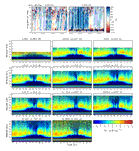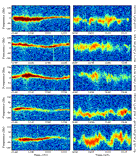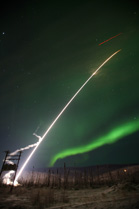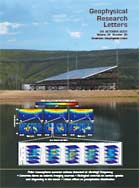







To request Poker Flat AMISR (PFISR) or Resolute Bay North Face (RISR-N) operations, email PI michael.nicolls@sri.com (CC mary.mccready@sri.com) as early as possible. Include experiment purpose, scientific objectives, relevant operating details (dates, hours, optical or geophysical conditions, etc.), and collaborators. If more time is requested than the operating budget allows, these details will help us combine operating modes and share windows to satisfy as many users as possible.
NOTE: Actual operations may vary from scheduled and will be posted as available.
|
FEB2010 PFISR and RISR-N operate for 10-day World
Day (WD) run studying effects of stratospheric
warming on the lower thermosphere and ionosphere.
Unfortunately, RISRÝs
generator failed on day 7. Analysis and repairs
are underway. |
|||||
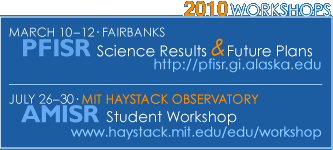
![]()
![]() REAL-TIME & ARCHIVAL
OPTICS DATA from Poker Flat and other Geophysical
Institute sites: http://optics.gi.alaska.edu/optics/
REAL-TIME & ARCHIVAL
OPTICS DATA from Poker Flat and other Geophysical
Institute sites: http://optics.gi.alaska.edu/optics/
![]()
![]() La
Plata, Argentina, has been proposed as a destination for one
of the AMISR faces. View
the (low-res or high-res .mov) visualization of LaPlISR making conjugate
measurements with the Arecibo ISR.
La
Plata, Argentina, has been proposed as a destination for one
of the AMISR faces. View
the (low-res or high-res .mov) visualization of LaPlISR making conjugate
measurements with the Arecibo ISR.
![]()
![]()
![]() AMISR PUBLICATIONS: 2006–PRESENT
AMISR PUBLICATIONS: 2006–PRESENT
AMISR is a modular, mobile radar facility that will be used by scientists and students from around the world to conduct studies of the upper atmosphere and to observe space weather events.
SRI International, under a grant from the National Science Foundation, is leading a collaborative effort in the development of AMISR, whose novel modular configuration is designed to allow relative ease of relocation for studying upper atmospheric activity around the globe. Remote operation and electronic beam steering will allow researchers operate and position the radar beam instantaneously to accurately measure rapidly changing space weather events.
When completed, AMISR will consist of three separate radar faces, with each face comprised of 128 building block-like panels over a 30 x 30 meter roughly square surface. AMISR is being constructed in two stages: the first face in Poker Flat, Alaska, has been completed and is already being used for scientific investigations. The remaining two faces are under construction in Resolute Bay, Nunavut, Canada. Future AMISR locations will be determined by a scientific advisory panel. Since each face of AMISR functions independently, AMISR can be deployed in up to three separate locations at the same time.
For additional information about the AMISR project, see the SRI press release.
This material is based upon work supported by the National Science Foundation
under Grant No. ATM-0608577. Any opinions, findings and conclusions or
recomendations expressed in this material are those of the author(s) and
do not necessarily reflect the views of the National Science Foundation
(NSF).
 |
 |
|
| SRI International – Lead design and construction of the facility. Oversee operations and use during design verification tests. |
| Co-investigator institutions include MIT Millstone Hill, University of Alaska, University of Calgary, and University of Saskatchewan. |
| Sanmina-SCI – Manufacture of antenna element units, the basic building blocks of radar panels. |
| VECO Alaska – Oversee design and structural engineering of radar, including panels and support scaffolding. |
 |
|
AMISR conceptual drawing with aurora borealis in background. |
 |
Incoherent scatter radar dish at Sondrestrom Research Facility. 128 kb (.jpg) 2.1 MB (.jpg) |
|
 |
Earth's magnetosphere/ionosphere response to the impact of a solar magnetic cloud. MORE > | |
 |
The magnetic cloud impact described above also intensifies the large-scale voltage measured over the Earth's magnetic pole. MORE > | |
